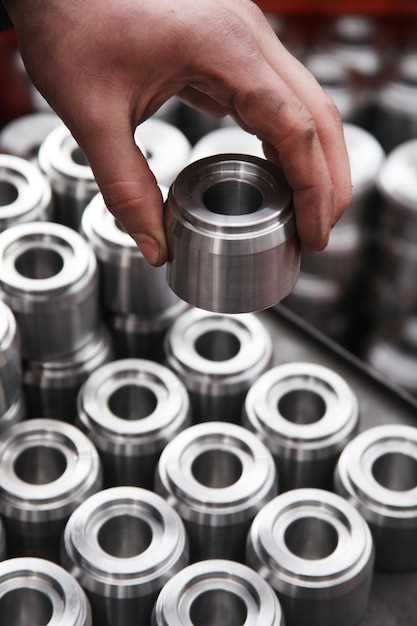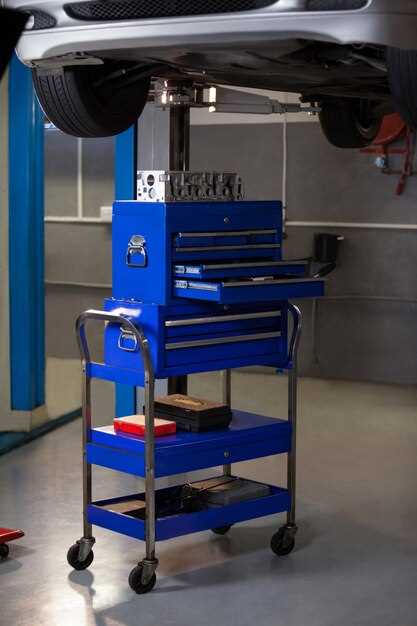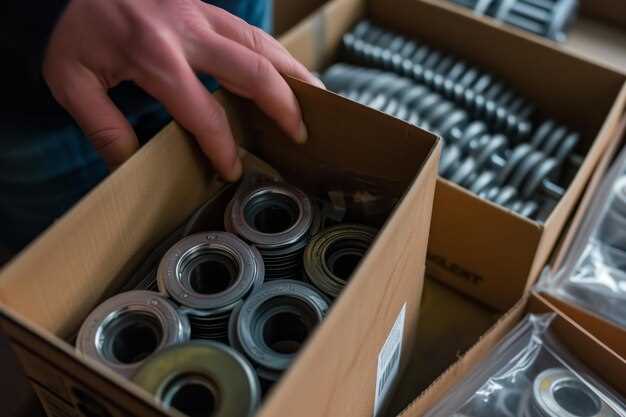Best Practices for Storing Spare Classic Parts

In the world of classic automobiles and machinery, the availability of spare parts can often make the difference between restoring a cherished model and watching it gather dust in a garage. Effective storage solutions are vital for preserving these components in optimal condition over time. Implementing the right strategies can not only extend the lifespan of spare parts but also enhance their accessibility when needed.
Understanding the specific requirements for storing classic spare parts is crucial. Different materials, such as rubber, metal, and plastics, each present unique challenges when it comes to storage. Factors like temperature, humidity, and exposure to light can significantly affect the integrity of these components. Therefore, establishing a controlled environment for storage is one of the most effective strategies to ensure that your spare parts remain in excellent condition.
Additionally, organizing spare parts systematically can improve efficiency and reduce the time spent searching for specific items. Using labeling systems, clear bins, and racks can facilitate easy access and inventory management, making sure that forgotten components don’t become a problem in the future. The right storage practices will not only protect your investment but will also ensure that your classic vehicles are always ready to hit the road.
Optimal Conditions for Preserving Spare Parts

Maintaining spare parts in optimal storage conditions is essential for ensuring their longevity and functionality. The primary factors that influence preservation include temperature, humidity, light exposure, and cleanliness.
Temperature control is critical; most spare parts should be stored in a cool, dry environment. Elevated temperatures can accelerate the degradation of materials, leading to warping or other damage. Ideally, the storage area should maintain a stable temperature, avoiding extreme fluctuations.
Humidity levels are another vital aspect. Excess moisture can promote rust and corrosion in metal components, while excessive dryness may cause plastics and rubber parts to brittle and crack. It is advisable to maintain relative humidity levels between 30% and 50% to balance these risks.
Limiting exposure to light is also crucial, especially for parts made from sensitive materials that can degrade over time when subjected to ultraviolet rays. Storing spare parts in opaque containers or dark environments can significantly prolong their lifespan.
Lastly, cleanliness should not be overlooked. Dust and debris can interfere with the functioning of spare parts. Regularly inspecting and cleaning storage areas and parts themselves ensures that they remain in optimal condition and ready for use when needed.
Inventory Management Techniques for Classic Parts

Effective inventory management is crucial for preserving and storing classic spare parts. One of the primary techniques is implementing a systematic categorization method. This involves organizing parts by categories such as type, model, or functionality. Proper categorization simplifies the retrieval process and ensures that parts are easily accessible when needed.
Utilizing inventory management software can significantly enhance the tracking of classic spare parts. Such software allows for real-time updates on stock levels, alerts for low inventory, and detailed reporting on usage trends. This technology aids in preventing overstock situations and ensures that storage space is utilized efficiently.
Regular inventory audits are another essential technique. Conducting these audits helps in identifying discrepancies in stock levels, ensuring that physical storage matches recorded inventory. Additionally, audits can reveal slow-moving parts that can be promoted or discounted to free up space for more in-demand items.
Implementing a first-in, first-out (FIFO) system is beneficial, especially for perishable parts or those prone to obsolescence. This method ensures that older stock is used first, minimizing wastage and preventing outdated or unusable parts from occupying valuable storage space.
Maintaining optimal storage conditions is also vital for classic spare parts. Factors such as temperature, humidity, and exposure to light can significantly affect the condition of these components. Investing in climate-controlled storage facilities or implementing proper shelving and packing techniques can safeguard parts from deterioration.
Lastly, establishing relationships with reliable suppliers can optimize inventory turnover. By working closely with vendors, you can ensure the availability of critical spare parts and negotiate favorable terms, which directly impacts your storage efficiency and management practices.
Organizational Systems for Easy Access and Retrieval
Effective organization of spare parts is essential for ensuring quick access and efficient retrieval. Implementing a structured system reduces downtime and enhances operational efficiency. One of the primary strategies is to categorize parts based on their type, size, or application. This allows for seamless navigation, allowing users to locate necessary components without unnecessary delays.
A digital inventory management system can further streamline the process. By utilizing software to track spare parts, organizations can maintain real-time visibility over their stock levels. This facilitates better forecasting and reorder processes, minimizing the risk of running out of critical items.
Labeling is another crucial aspect of organization. Clearly marked shelves, bins, and storage areas ensure that parts are easy to identify. This can include barcodes or QR codes that link to detailed information about each part, enhancing retrieval accuracy.
Implementing a first-in, first-out (FIFO) system helps manage stock effectively. This approach ensures that older spare parts are used before newer additions, reducing waste and obsolescence. Regular audits are also vital to ensure that inventory levels are accurate and that the organization remains aligned with operational needs.
Finally, training staff on the established organizational system enhances efficiency and encourages a culture of accountability. When employees understand the system, they can quickly locate and retrieve spare parts, contributing to a smoother workflow and better overall performance.



